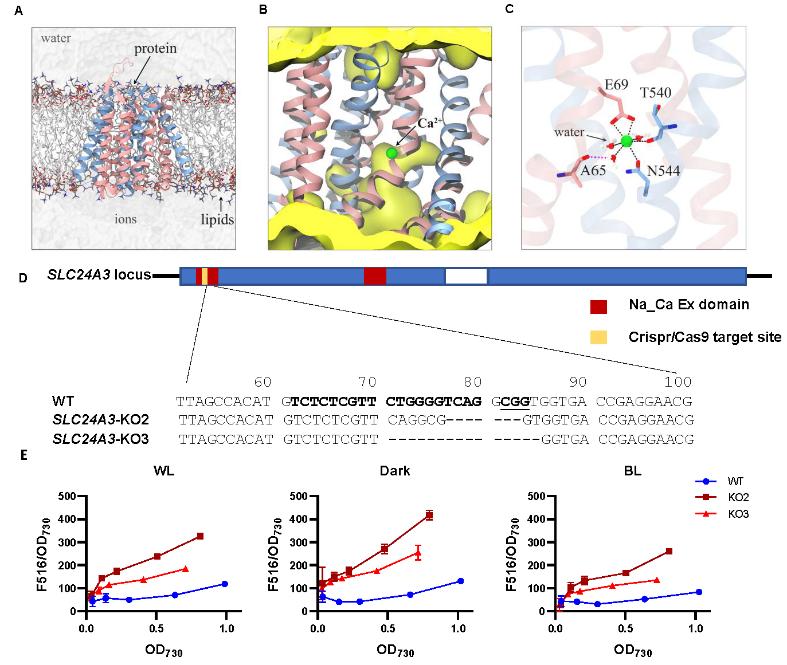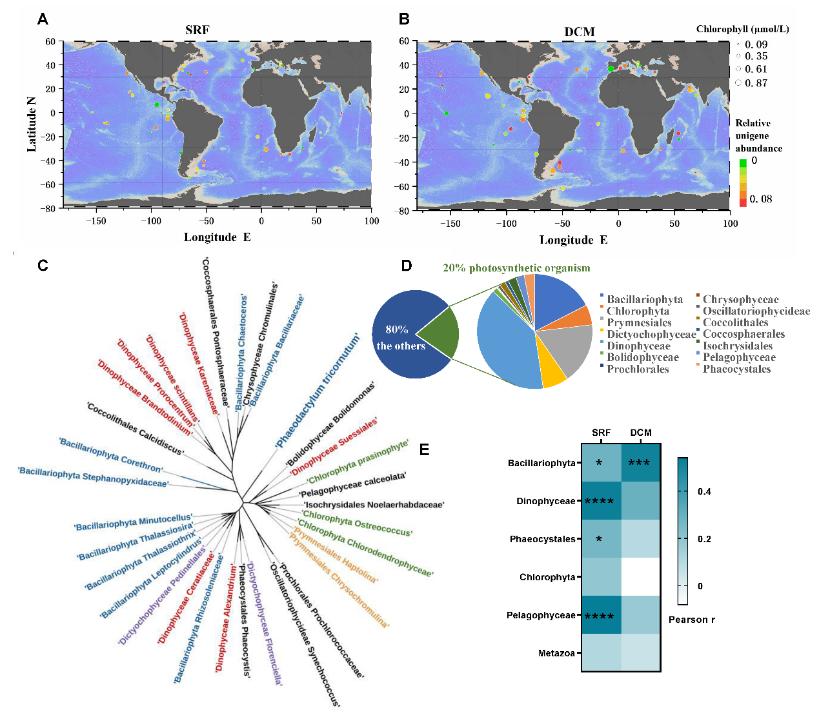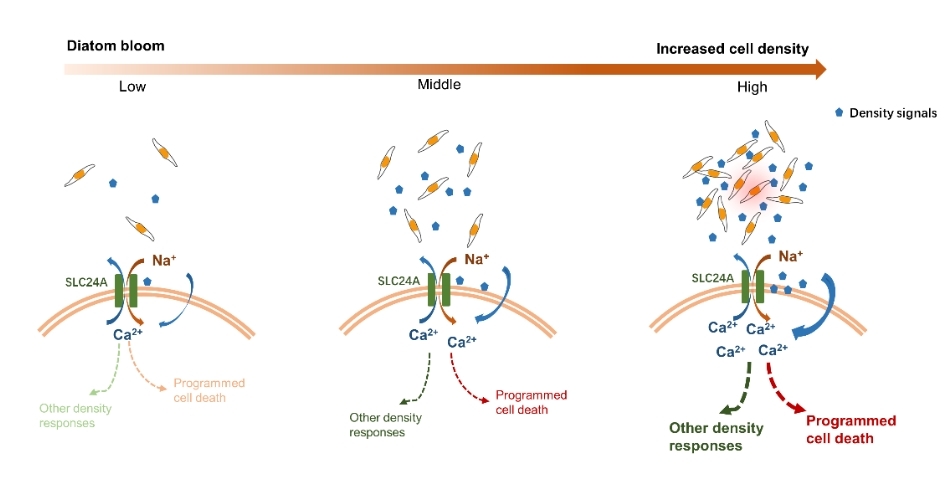Molecular Mechanisms Governing Diatom Population Density Signals Revealed through Gene Editing Technology
The intricate dynamics of diatom blooms, influenced by a myriad of external factors and internal signals, continue to captivate scientific inquiry. After recognizing the potential role of density perception and intracellular signaling in dictating these phenomena, researchers have embarked on elucidating the molecular underpinnings of diatom population density regulation.
Recently, the research team led by Prof. WANG Guangce from the Institute of Oceanology of the Chinese Academy of Sciences (IOCAS) reported the significant role of the marine diatom SLC24A in population density signal perception and regulation.
The study was published in The ISME Journal on Mar. 08.
Researchers meticulously identified and targeted potential genes implicated in density signal transduction, culminating in the discovery of the pivotal hub gene PtSLC24A. Two PtSLC24A knockout mutants of Phaeodactylum tricornutum were obtained using CRISPR/Cas9 gene editing technology. Intracellular Ca2+ concentration measurements indicated that cell density could induce Ca2+ responses, and knockout of PtSLC24A increased intracellular Ca2+ concentration. Three-dimensional structure modeling and simulation calculations of PtSLC24A protein supported its Ca2+ transport function.
"Furthermore, the study revealed that high density could induce cell apoptosis, and knockout of PtSLC24A exacerbated this phenomenon," explained LIU Xuehua, first author of the study. "PtSLC24A also affected the expression of density-dependent genes at different cell densities."
Beyond the laboratory confines, the ecological relevance of SLC24A was underscored by its ubiquitous distribution across Tara Oceans sites, with expression patterns correlating positively with chlorophyll content in diverse marine phytoplankton taxa.
"These findings underscore the pivotal role of SLC24A-mediated Ca2+ signaling in mediating density-dependent responses within natural marine ecosystems, providing critical insights into the ecological ramifications of diatom population dynamics," said Dr. GU Wenhui, corresponding author of the study.
Based on data obtained in molecular genetics, cellular physiology, computational structural biology, and in situ marine data, a Ca2+-mediated intracellular signal transduction mechanism for marine diatom cell density signals has been proposed. According to the model, when cells receive chemical cues carrying population density signals, PtSLC24A on the cell membrane will accelerate the efflux of intracellular Ca2+ to maintain a specific intracellular Ca2+ level, and transmit density signals intracellularly, then regulate physiological processes, including cell apoptosis, and ultimately affect the fate of population.
Prof. WANG added: "By delineating a Ca2+-mediated intracellular signal transduction mechanism facilitated by PtSLC24A, the study not only advances our understanding of diatom bloom dynamics but also holds profound implications for the high-density cultivation of microalgae for industrial applications."
This study was supported by the National Natural Science Foundation of China, the Key Research and Development Program of Shandong Province, and the National Algal Industry Technology System, et al.

Fig. 1 WGCNA module construction, PtSLC24A molecular dynamics simulation and its biological functions.

Fig. 2 Distribution, phylogenetic analysis and response to density changes of SLC24A in Tara Oceans.

Fig. 3 Model of SLC24A-mediated population density perception and regulation mechanism.
Xuehua Liu, Zhicheng Zuo, Xiujun Xie, Shan Gao, Songcui Wu, Wenhui Gu*, Guangce Wang*. (2024). SLC24A-mediated calcium exchange as an indispensable component of the diatom cell density-driven signaling pathway, The ISME Journal, wrae039.
(Text by LIU Xuehua)
Media Contact:
ZHANG Yiyi
Institute of Oceanology
E-mail: zhangyiyi@qdio.ac.cn
(Editor: ZHANG Yiyi)